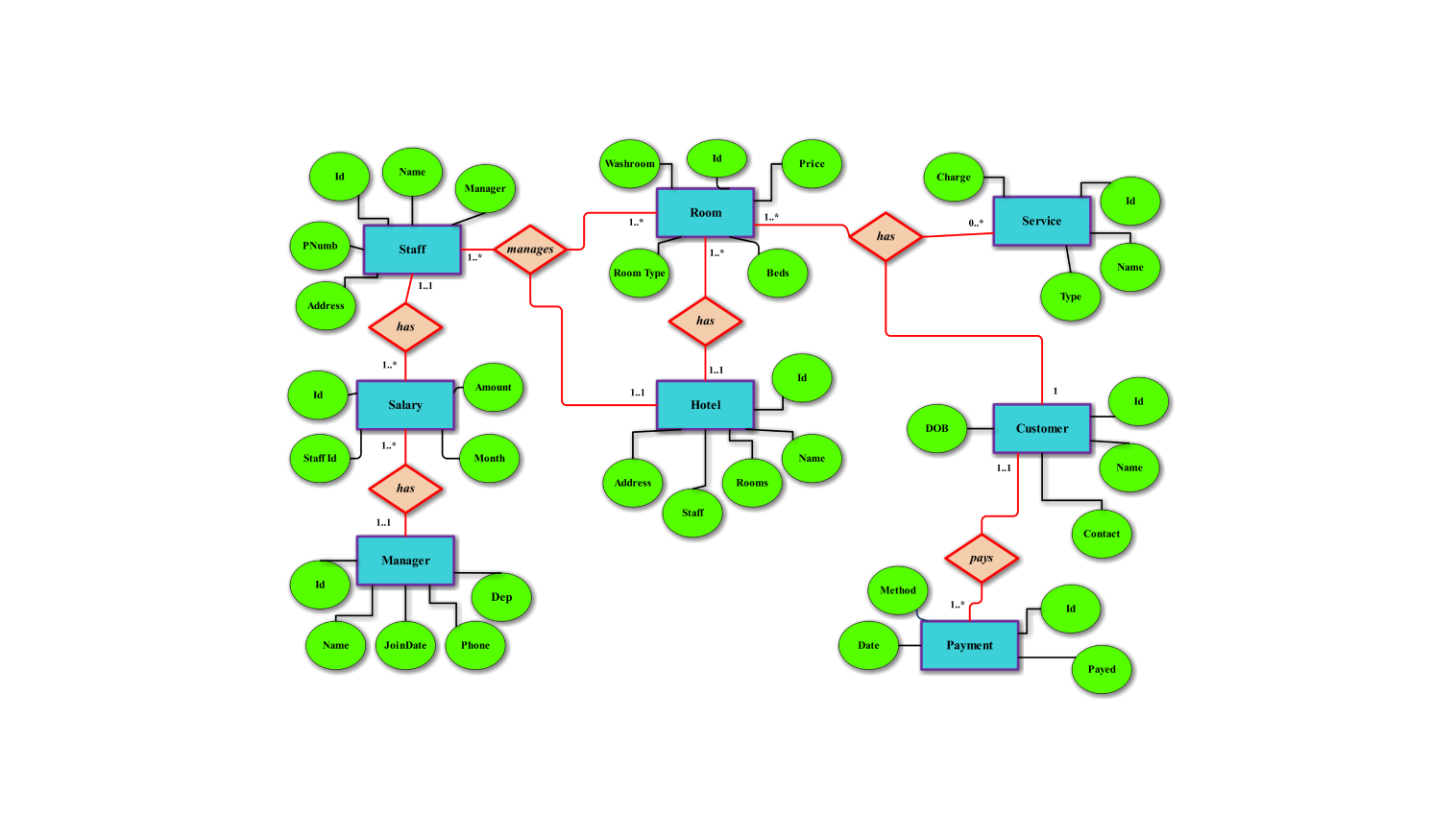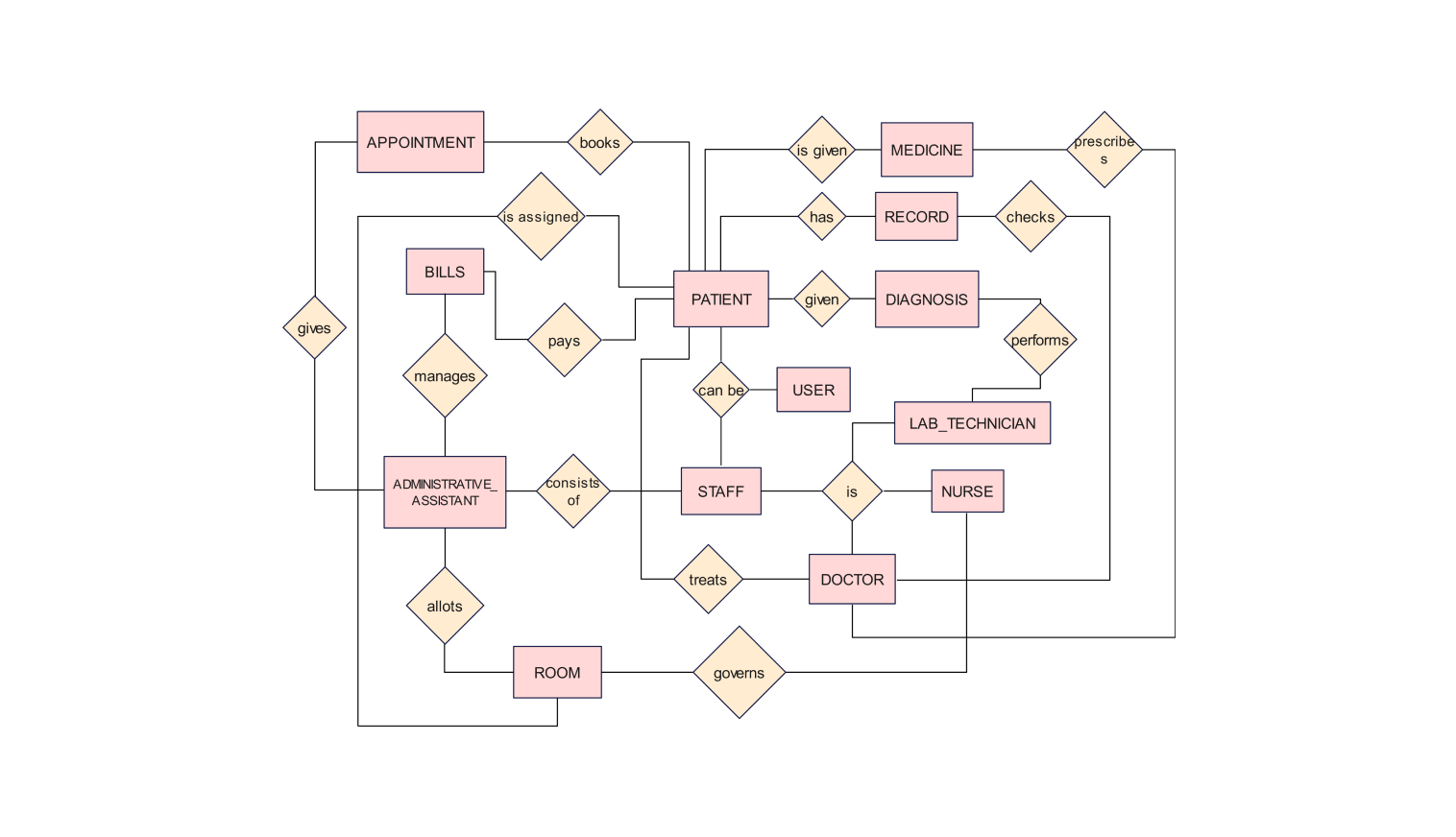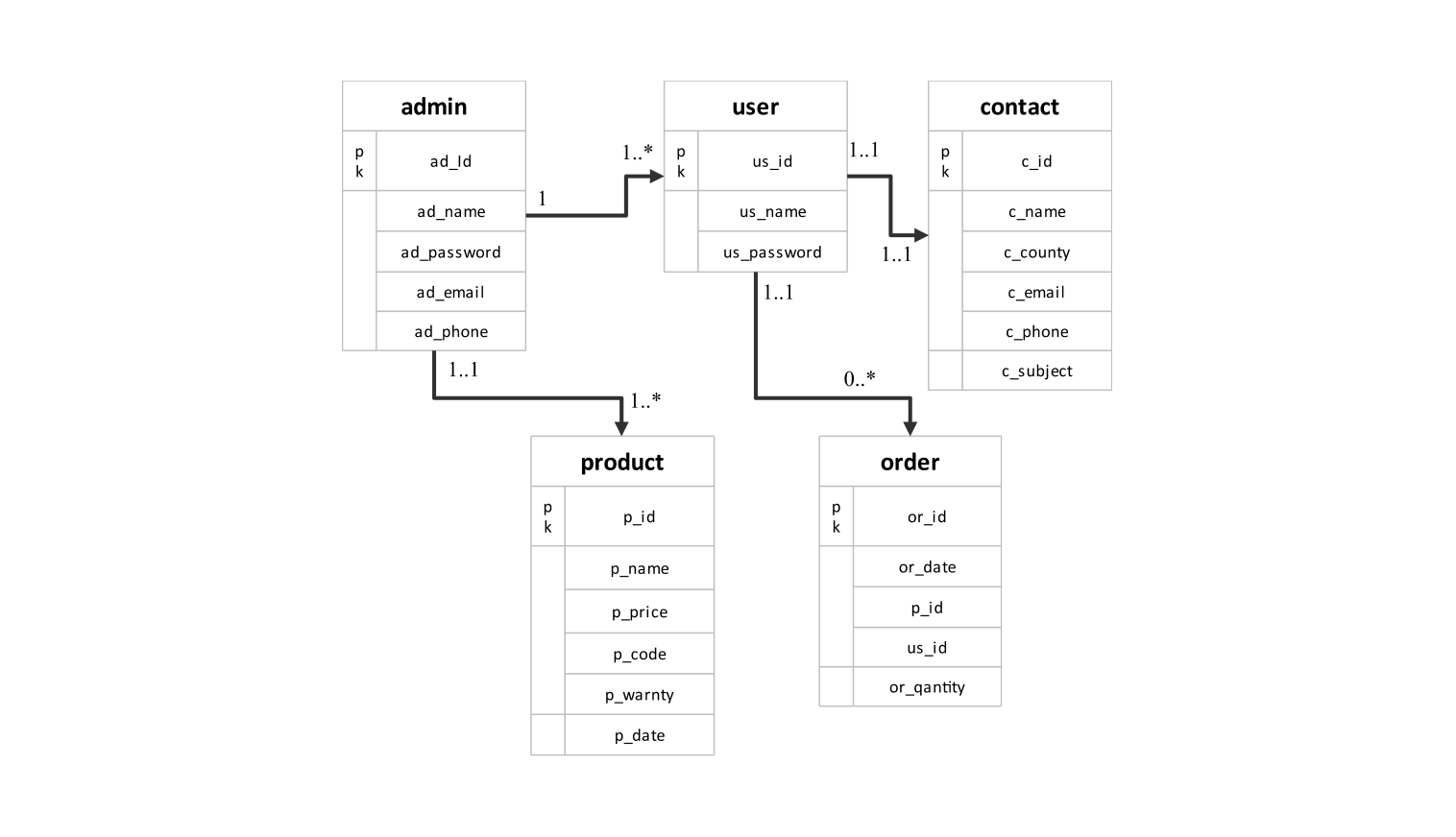- All templates
- ER diagram templates
- ER diagram human resources
About this ER diagram for human resource
The main focus of this ERD is to showcase the features of a human resource management system. It includes various entities along with their relationships. These are employee, training, leave, attendance, etc. The ERD shows the data flow.
It also gives an overview of the interaction between the entities. This uses the basic DBMS concepts. These are primary keys, secondary keys, etc. It aids in building an organized system required for a structured approach.
The person entity is located in the center of the figure. It maintains vital information about each person. The details include name, date of birth (DOB), gender, job title, and department.
This entity is linked to other entities. These are leave, attendance, training, and job. This represents the different human resource procedures that workers go through. The job entity contains the information of the employee's role, such as the title, description, and pay range.
The department entity stores information on the organization's departments. This information includes their names, locations, and the manager in charge of each. The manager entity stores information on each manager. This is their name, contact information, and the department they oversee.
Additional elements such as attendance, leave, and training are important human resource functions. The attendance entity keeps a record of daily check-in and check-out times. This helps to monitor staff presence. The type of leaves, start and end dates, and conditions for leave are recorded.
Finally, training holds information about the numerous training programs that workers participate in. This can be their kind, description, and duration. This ERD facilitates the effective organization and management of employee-related data and procedures. Hence, resulting in simplified human resource operations.
How to use this template
To begin with the customization of the ERD, choose the Use this template option. Add shapes, connections, and components from the left side to modify.
After establishing the basic architecture, alter the entities' properties and associations to meet your unique requirements. You may also change the visual style of the diagram to suit your preferences.
Once your ERD is ready, export it in several forms such as SVG, PNG, PDF, or JPG for sharing, documentation, or implementation.
Benefits of the ER diagram
The human resource management ERD provides various advantages for simplifying human resource operations. It centralizes information like attendance monitoring, leave management, and staff training. It makes data management easier for various kinds of uses.
This structure improves data accuracy while reducing duplication. This results in better decision-making. Furthermore, the ERD promotes scalability by allowing new entities to be incorporated. These can be performance assessments or extra departments etc.
The ERD also helps human resource teams communicate and coordinate better. It offers a consistent, visual idea of how the entities are connected. Overall, this ERD offers a more efficient, systematic, and adaptive human resource system that can meet the changing demands of a firm.
FAQs about the ER diagram
-
How does this ERD use employee data management?
This ERD organizes employee data by connecting various entities such as work, office, vacation, and attendance. It allows you to easily track important information such as employment, training, and termination records and ensures efficient human resource operations.
-
Can this ERD be expanded to include other human resource functions such as payroll?
Yes, ERD is designed to be flexible and scalable. As your system needs to grow, you can easily integrate other entities, such as payroll and benefits, to cover other areas of human resource management.
-
How does this ERD improve employee efficiency?
ERD links data training, participation, and distribution to employees so that staff can analyze all actions. This communication helps to assess the progress and reward the employees.
-
What role does the manager entity have in this ERD?
This entity is linked to the department. This communication allows for the delegation of managerial responsibility to certain departments. This guarantees clear reporting lines and helps to manage department-level tasks more efficiently.
Related templates
Get started with EdrawMax today
Create 210 types of diagrams online for free.
Draw a diagram free Draw a diagram free Draw a diagram free Draw a diagram free Draw a diagram free








